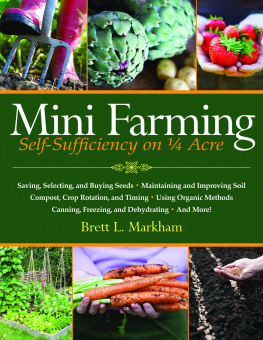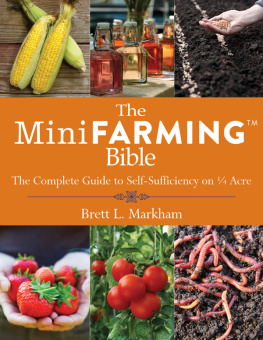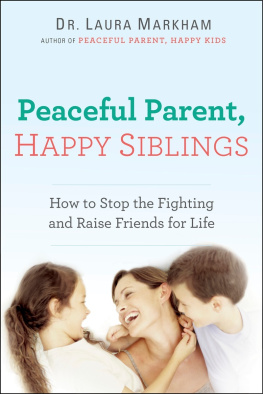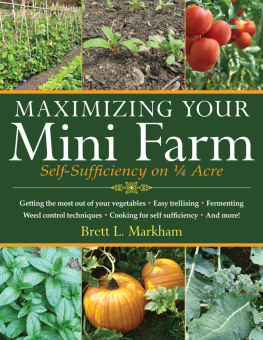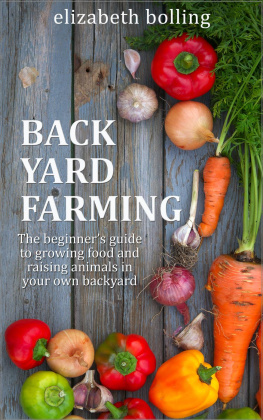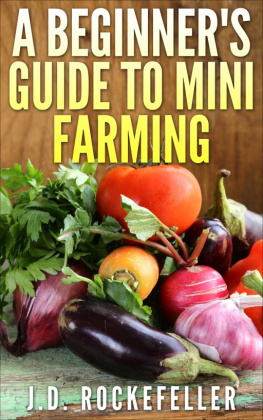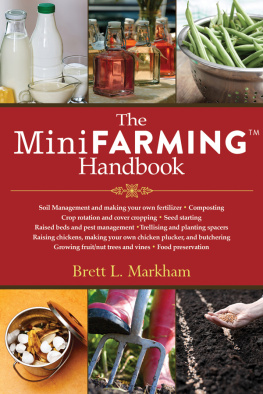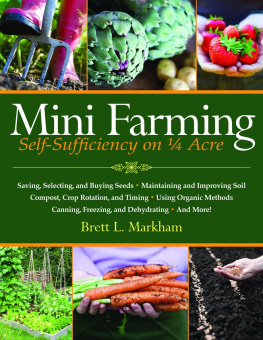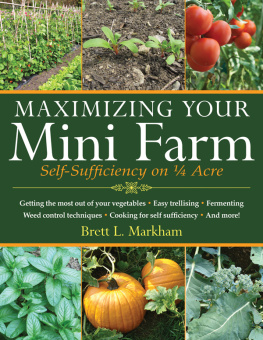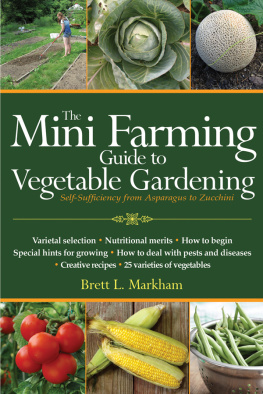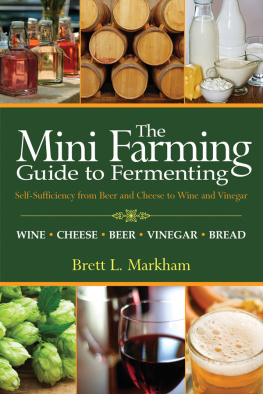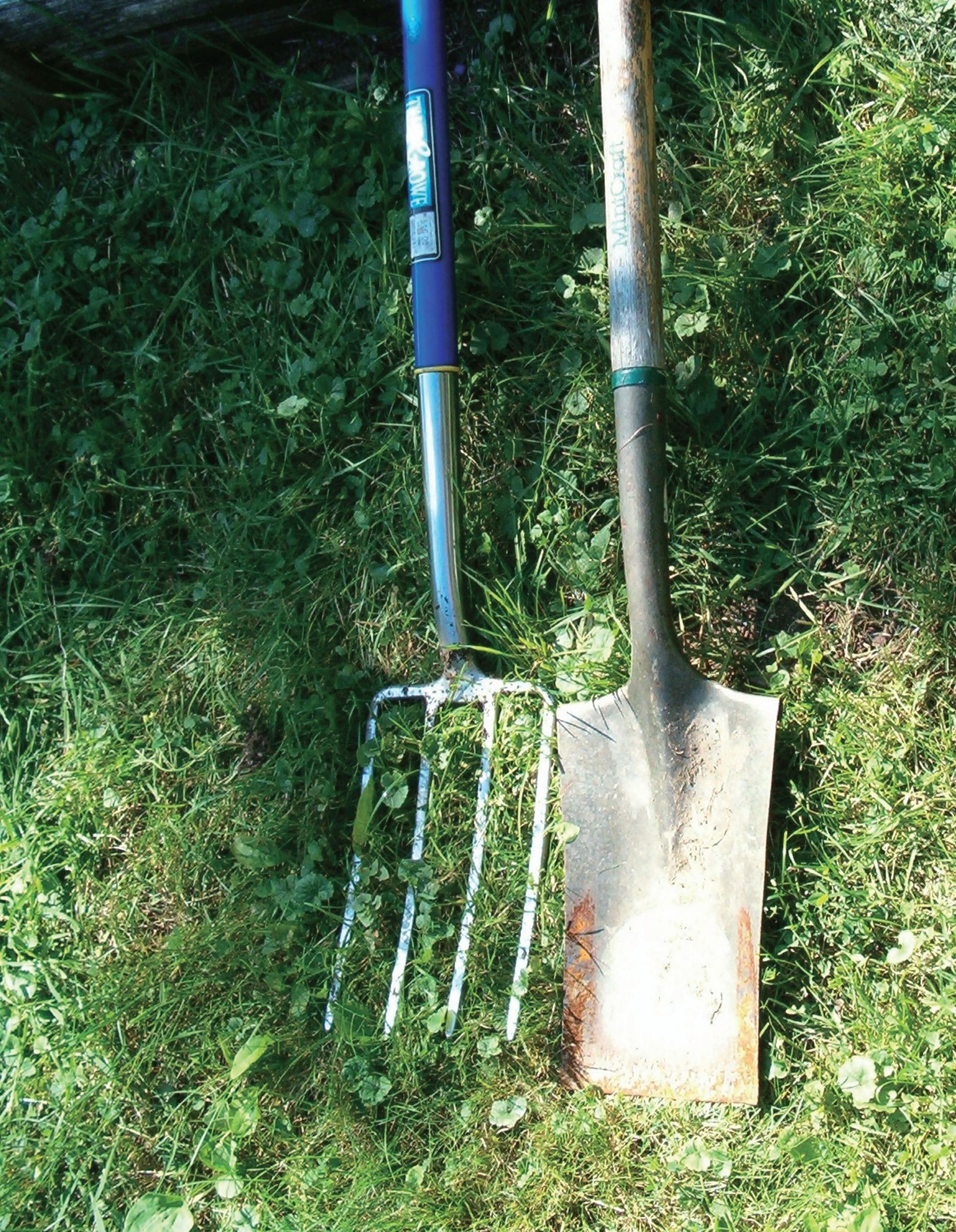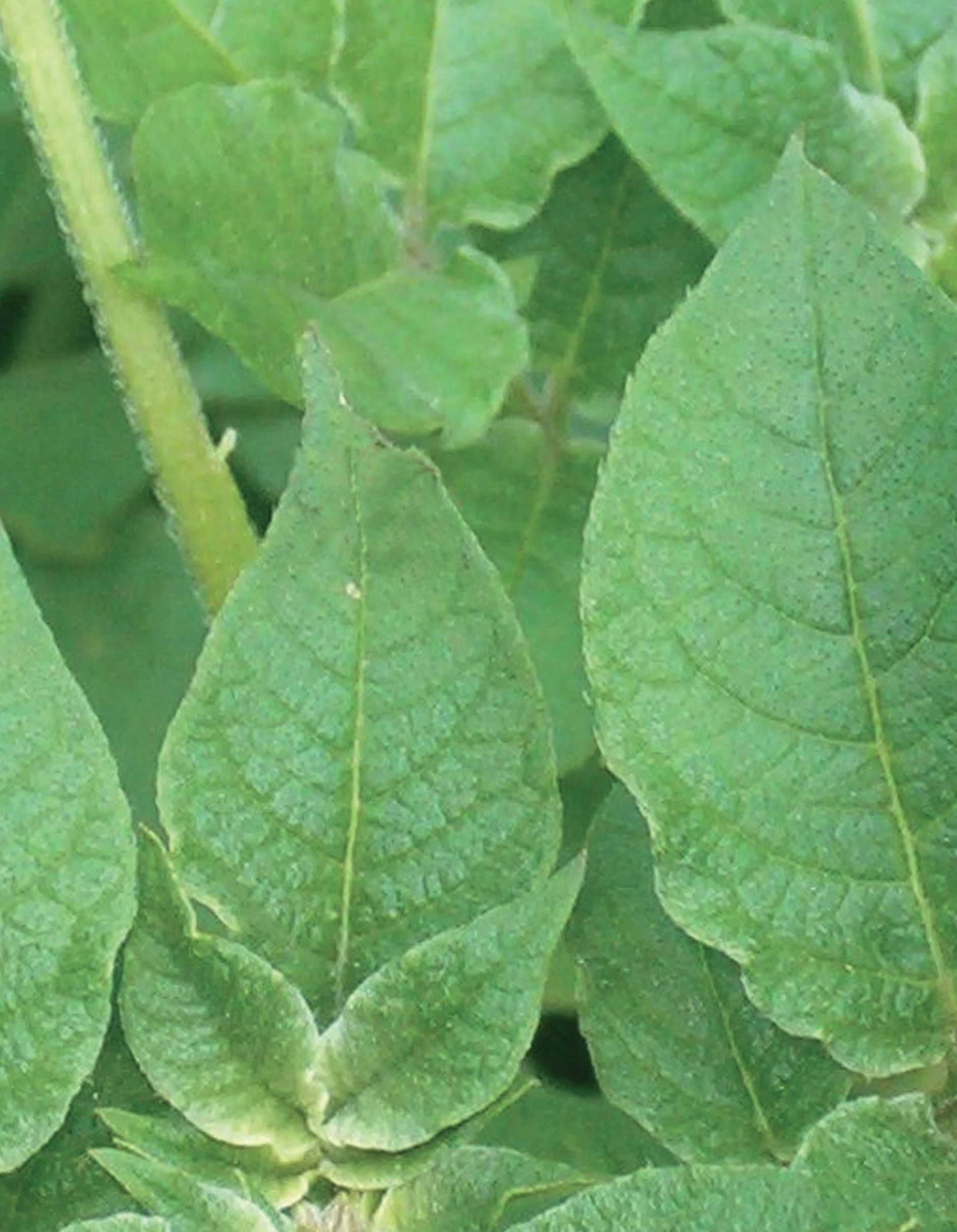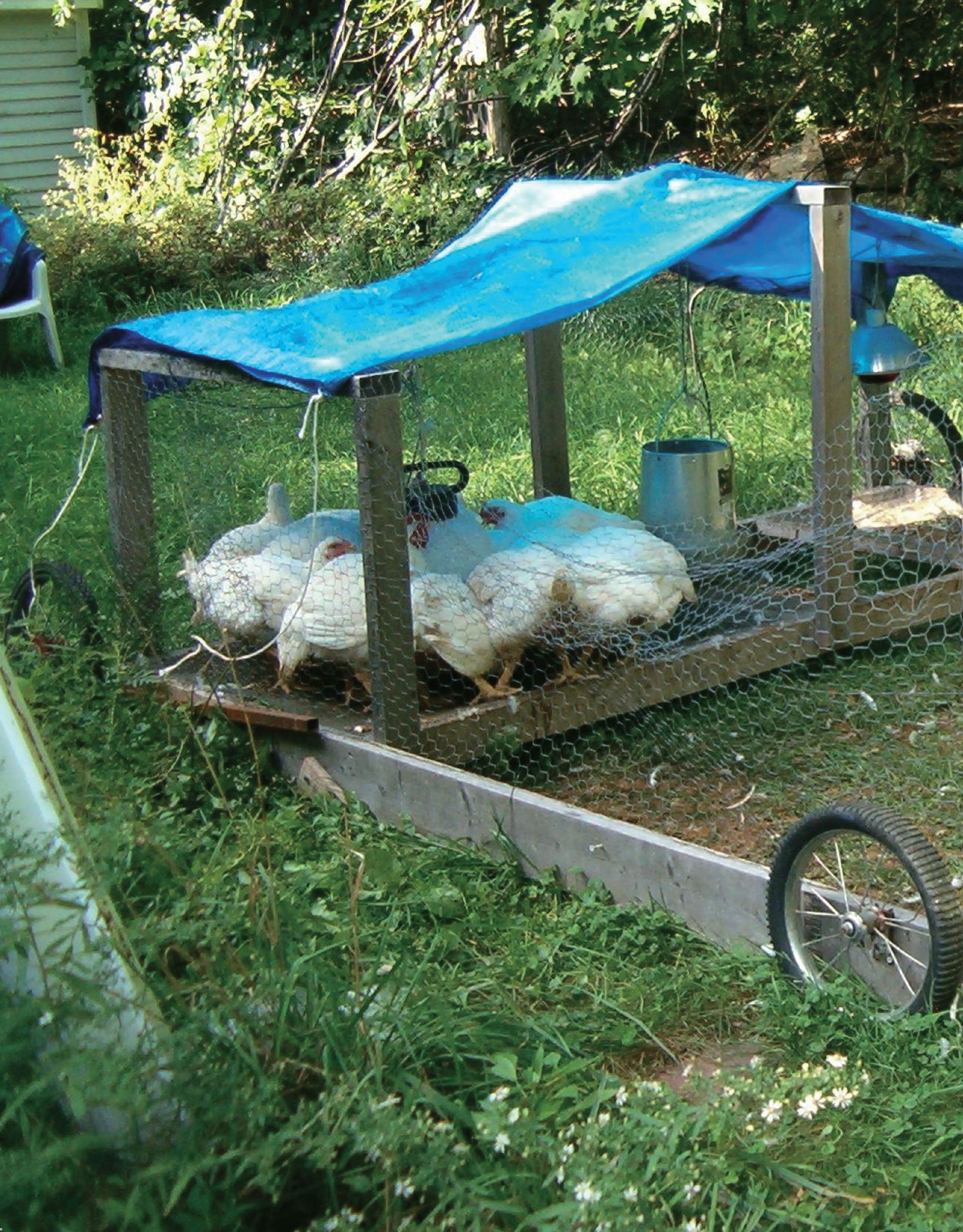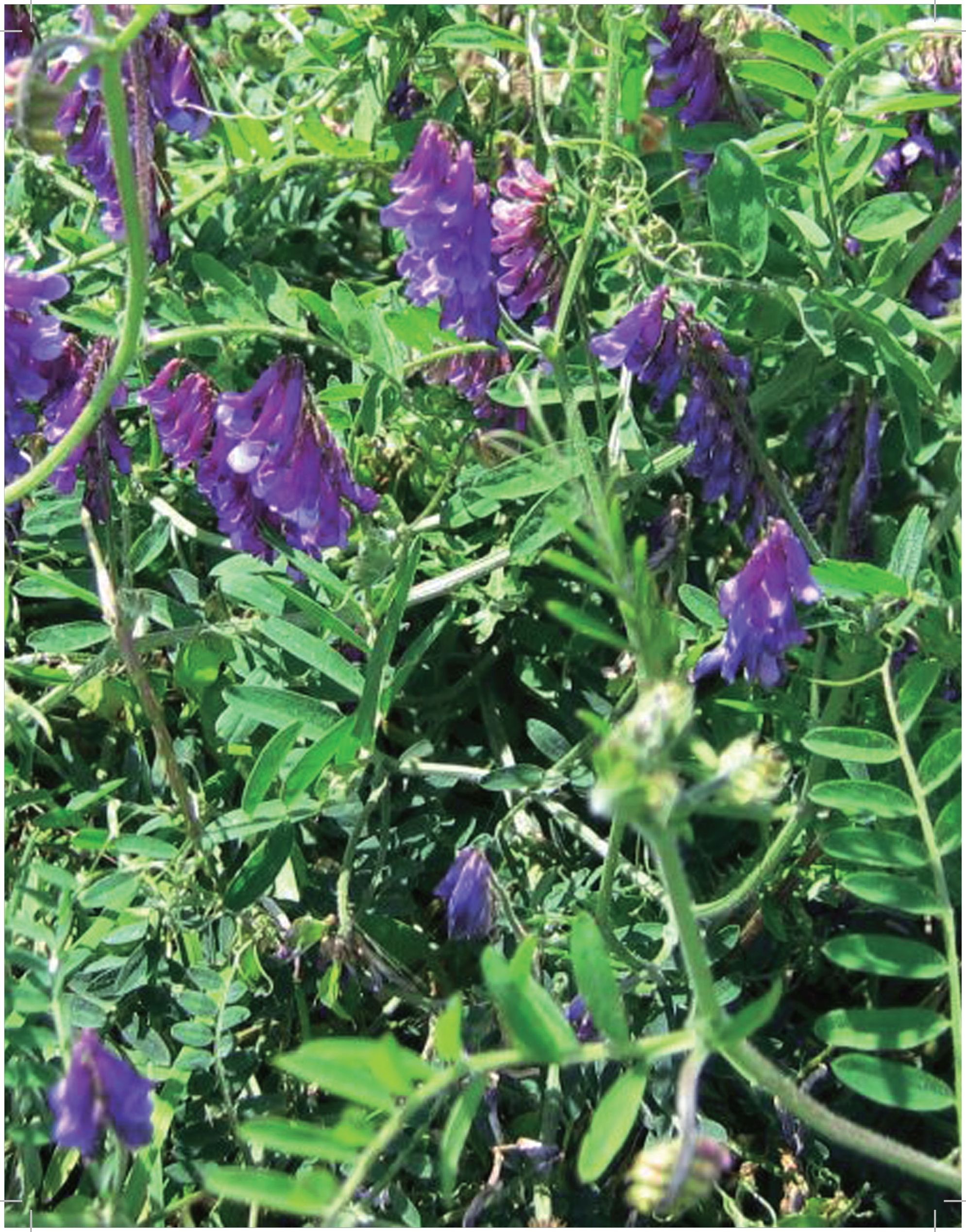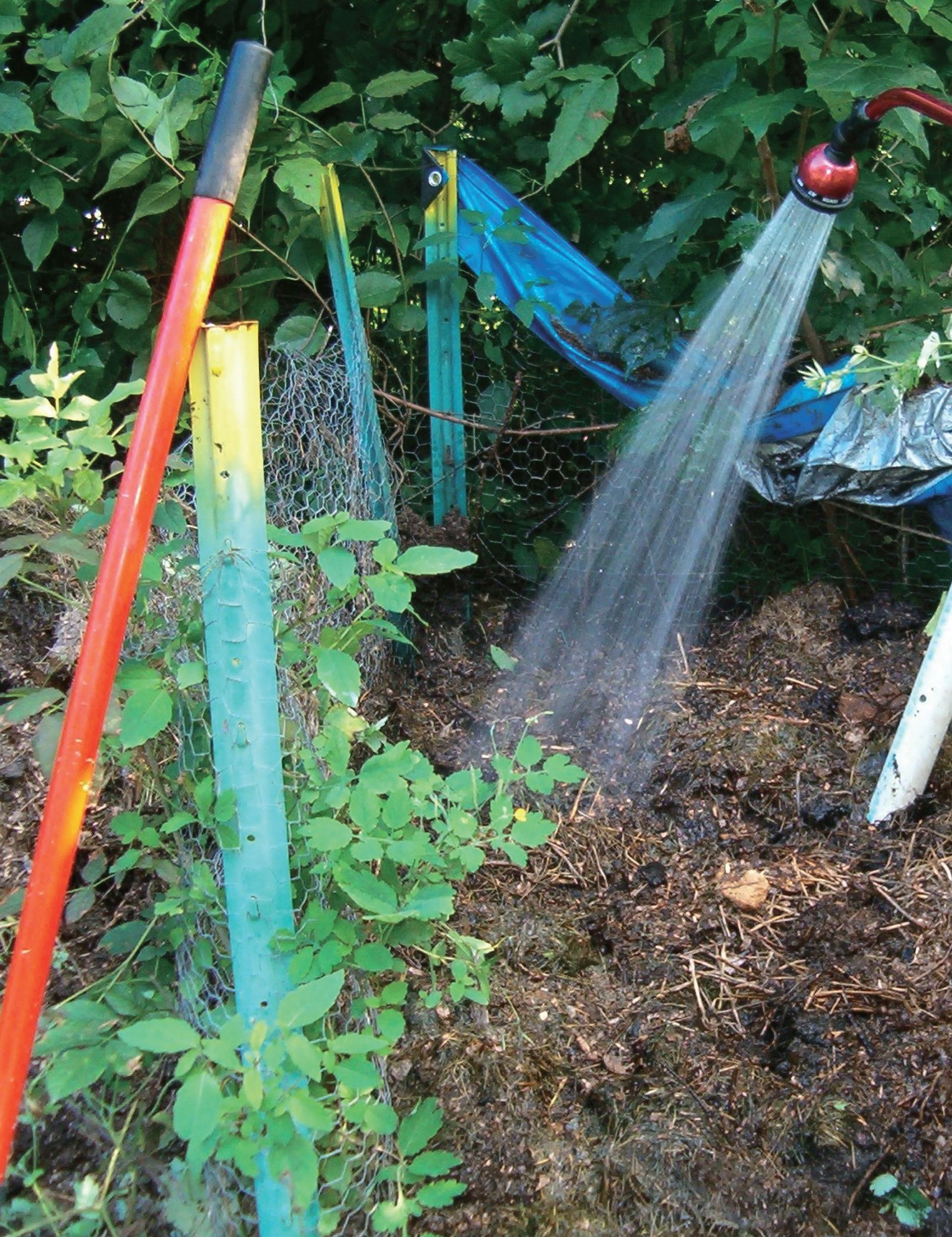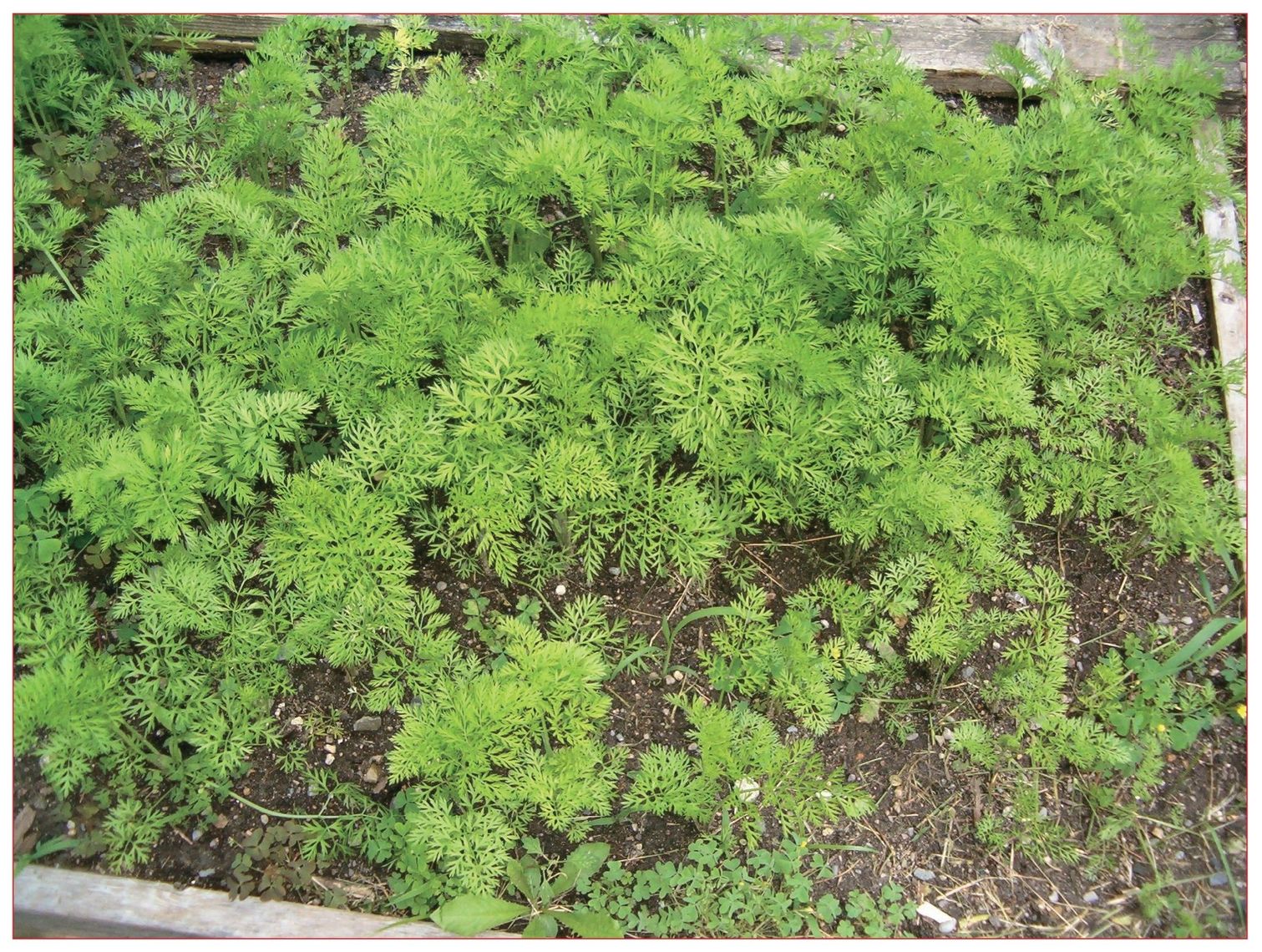Acknowledgments
I would like to thank my wife, Francine, for putting up with my idiosyncrasies and our ever-expanding mini-farm and for both proofreading and editing this book.
I would also like to thank my daughter, Hannah, a child of endless joy and keen insight whose well-being inspired me to develop the ideas and conclusions in this work.
Finally, albeit posthumously, I need to acknowledge the influence of my paternal grandfather, Gilbert Garfield Markham. My grandfather was a first-generation farmer who spent a lot of time with me on his farm, both instructing and answering my endless questions. He conveyed a lot of wisdom that I was too young to appreciate at the time but have since grown to appreciate greatly.
The sacred chain continues.
Bibliography
Ashworth, S. Seed to seed
Bartholomew, M. Ca$h from square foot gardening
Bartholomew, M. Square foot gardening
Bradley, F. Rodales garden answers
Bubel, N. The new seed starters handbook
Campbell, S. Let it rot!
Coleman, E. Four season harvest and The new organic grower
Deppe, C. Breed your own vegetable varieties
Ellis, B.; Bradley, F. The organic gardeners handbook of natural insect and disease control
Gooch, B. The ultimate guide to squirrel hunting
Grounds, R. The natural garden
Jeavons, J. How to grow more vegetables
Jenkins, J. The humanure handbook
Johnson, J.; Johnson, M. Successful small game hunting: Rediscovering our hunting heritage
Kains, M. Five acres and independence
Macher, R. Making your small farm profitable
Mercer, L. Storeys guide to raising poultry
Pangman, J. Chicken coops
Richey, D. The ultimate guide to deer hunting
Schwenke, K. Successful small scale farming
Notes
Overview of Intensive Agriculture
Intensive agricultural techniques, and their productivity compared to traditional row gardening methods, have been well documented in the past several decades, and certain methods have been used for centuries. They all share a number of common characteristics.
All of the intensive methods use raised beds and grow vegetables much more closely than traditional row methods and therefore require less landthus requiring less water and labor while reducing the need for weeding. Intensive gardens produce the same amount of food in 20% of the space or even less than that, leading to greatly reduced costs.
Traditional row gardening is one-dimensionalthat is, a straight line. A small furrow is dug with a hoe, and seeds are sprinkled in from a packet. After the seeds germinate, the farmer goes back down the row and thins plants to the recommended spacing. Each row takes its own space, plus space for walking paths on either side, and the walking paths become compacted under foot traffic. The entire arearows and pathsis watered and fertilized. Because the rows are exposed to the drying effects of sun and wind on both sides, mulching is required to conserve water and prevent weeds. The typical 100-foot row takes up at least 300 square feet of space. As a basis of comparison, the expected yield of carrots for that row is about 100 pounds.
Row gardens adapted from commercial agriculture are wasteful of space and resources on a home scale.
In contrast, intensive mini-farming is three-dimensional. Seeds are planted in the raised bed using within-row spacings in all directions, giving a two-dimensional space, and crops such as pole beans are grown on trellises, adding a third dimension. This vastly increases the quantity of a given crop that can be produced per unit area. In the case of carrots, a garden bed 4 feet wide and 6 feet long (24 square feet) will yield 100 pounds of carrots. Thats the theoretical yield, but in practice Ive found 32 square feet are required to get a full 100 pounds. Still, thats an amazing increase in space efficiency! Using trellising and pole beans instead of bush beans and indeterminate (vining) tomatoes instead of determinate (bush) tomatoes will also increase the yield per plant.
Using row gardening, the farmer has to fertilize, mulch, weed, and water 300 square feet of space to get 100 pounds of carrots. But by using raised beds and intensive gardening techniques that use close spacing, the farmer has to fertilize and water only 24 square feetless than 1/10 the space and thus less than 1/10 the fertilizer and water. The cost savings are immense, and the intensive farmer can also dispense with mulching, because the plants are growing so closely together that they shade each others stems and the ground, conserving moisture and shading out weeds. The shade provided by growing plants closely is also helpful in protecting beneficial soil microbes from the damaging effects of ultraviolet radiation from the sun. Last season I kept records of how much weeding was required per 100 square feet averaged across crops as diverse as broccoli and tomatoes, and because of the living mulch aspect of intensive gardening, less than 30 minutes per season were required per 100 square feet.
There are three schools of thought regarding the spacing of plants in intensively planted beds. The Grow Biointensive method recommends a hexagonal pattern using various sorts of hexagonal and triangular jigs. The Square Foot method recommends using a grid of squares dividing every square foot into a number of subsquares appropriate to the spacing of the crop being grown. My own method is to plant a properly spaced row, go up the distance within a row, and then plant seeds in parallel.
Carrots planted intensively in a raised bed yielded 100 pounds in just 32 square feet.
A little analysis yields a few facts. The Grow Biointensive method actually fits more vegetables into the same space compared to the other two, but for most vegetables the difference is 10% or less. Offsetting this advantage is the fact that the Grow Biointensive planting method is painstaking and that the average person interested in farming isnt about to envision a hexagon as being composed of a series of equilateral triangles. However, this process will increase yields for a farmer handy enough to set up the proper jigs to make the planting process easy. The jigs are plywood triangles composed of three 60-degree angles and with all three sides the same length as the planting distance between each plant of each different crop. A seed is planted at each of the three points.

